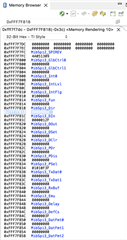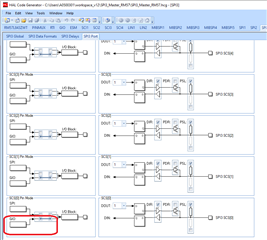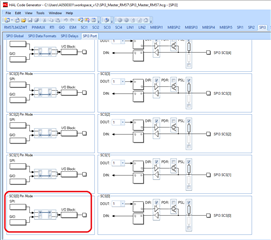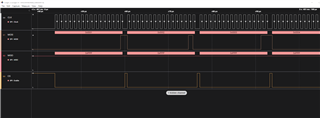Other Parts Discussed in Thread: HALCOGEN, RM57L843
To whom it may concern,
I am trying to use the SPI3 on the LAUNCHXL2-RM57L to access the AT25080 SPI EEPROM(https://ww1.microchip.com/downloads/en/DeviceDoc/doc3401.pdf) on the Aardvard I2C/SPI activity board.
The following pins as marked on the board are being used:
3CS1
3MOSI
3MISO
3CLK
GND
5V
Configured the SPI3 port followed an example here(https://community.element14.com/members-area/personalblogs/b/blog/posts/talk-spi-to-eeprom-with-hercules-launchpad-hero).
Trying to do a simple application to write and read from the AT25080 as following:
void Ready_25LC(void) {
uint16 buffer_status[2]={0x03,0x00}; // Initial Instruction
gioSetDirection(spiPORT5, 0x3);
gioSetBit(spiPORT3, SPI3_CS0, LOW);
spiTransmitData(spiREG3, &dataconfig1_t, 1, (uint16*) buffer_status);
spiReceiveData(spiREG3, &dataconfig1_t, 1, (uint16*) buffer_status);
gioSetBit(spiPORT3, SPI3_CS0, HIGH);
return;
}
Tried to use a Beagle analyzer to capture the traffic. However, there is not any. The analyzer is working OK since I have used the Aardvark Host adapter and was able to capture the SPI packets.
I also tried to dump the spiPORT3 registers since that is what gioSetBit and gioSetDirection is toggling. However, I did not see any MibSpi3_Dir(0xFFF7F818) and MibSpi3Dset or MibSpi3DCLR change as shown in the memory capture below. Used an meter and measured the 3CS1 pin and did not see any voltage change as well.

Would appreciate any suggestion from you.
Thank you,
Helen





